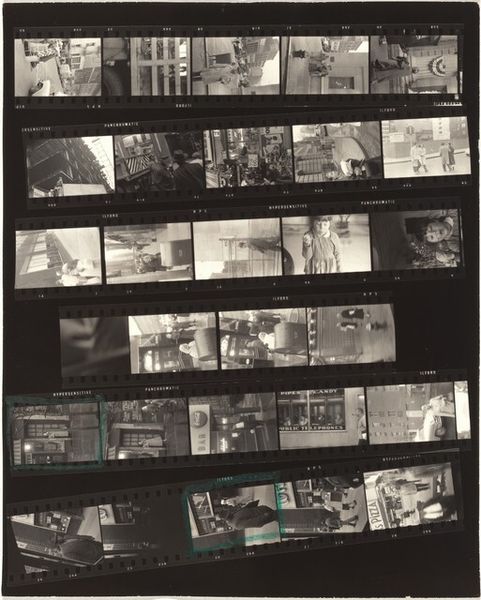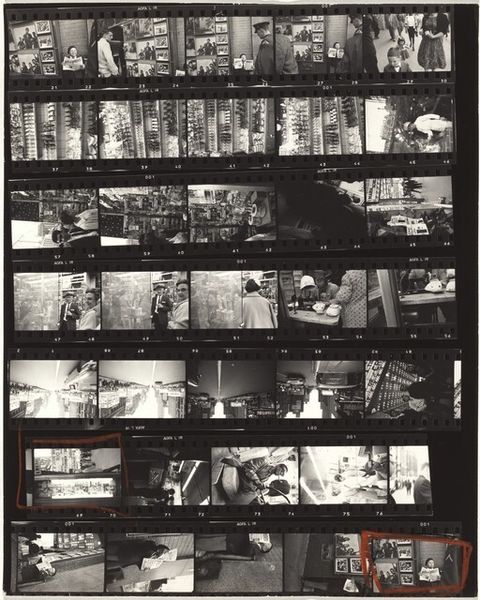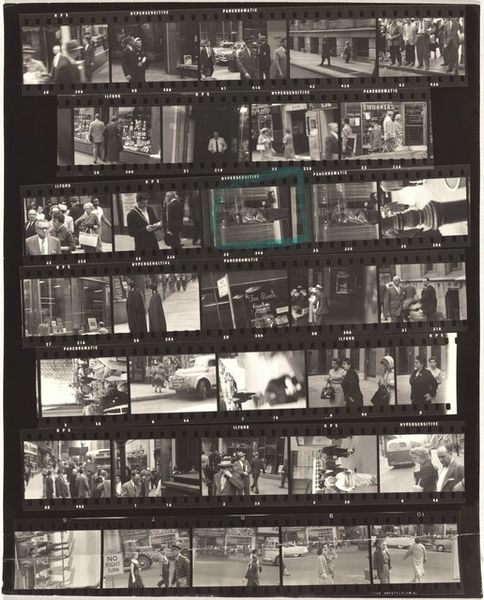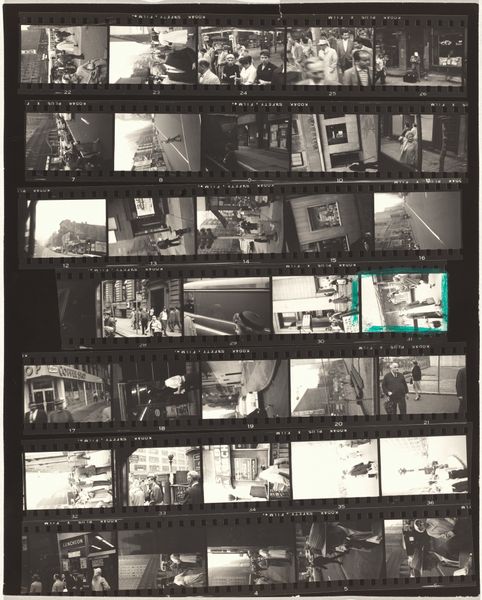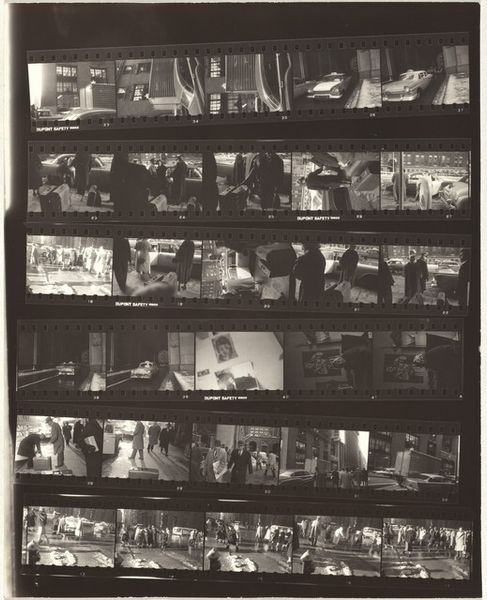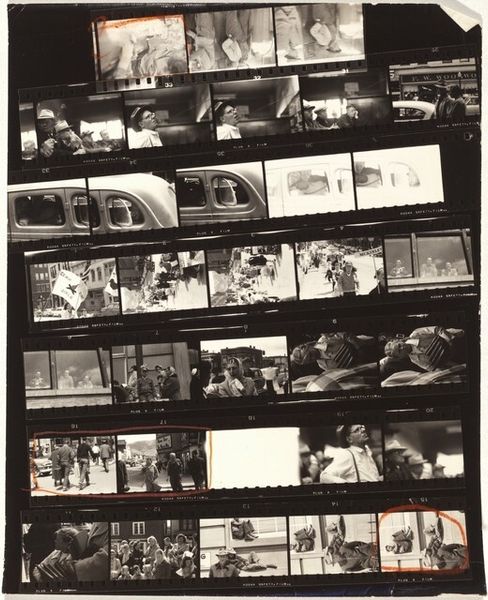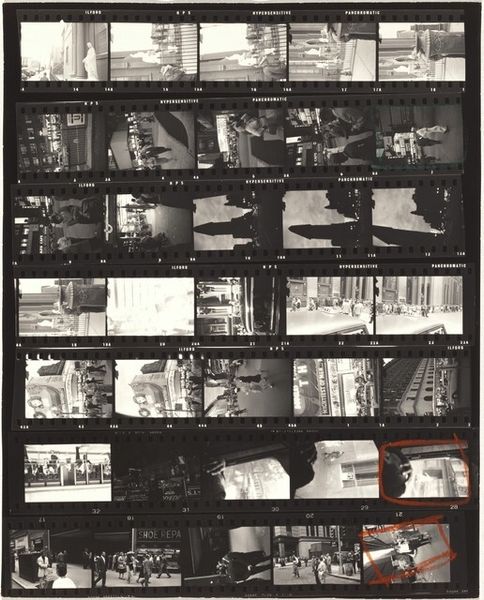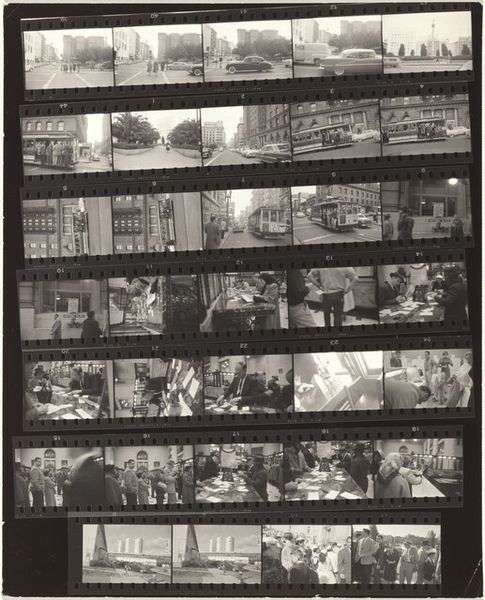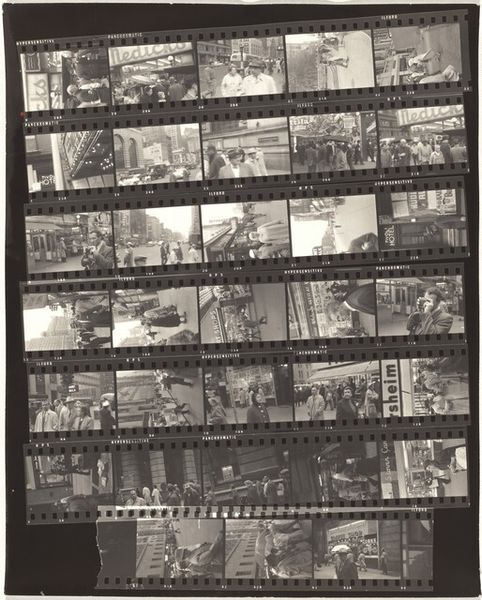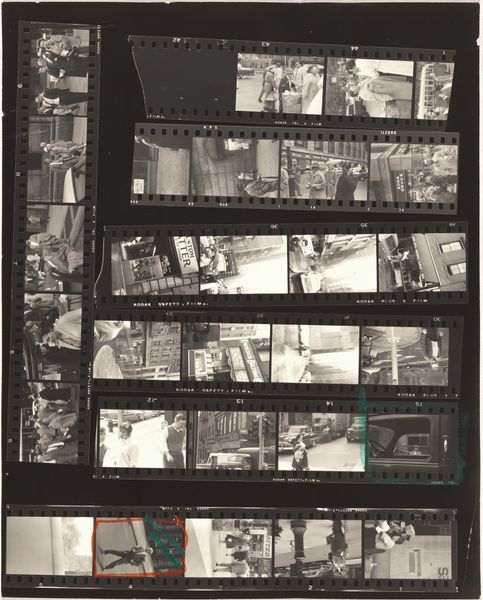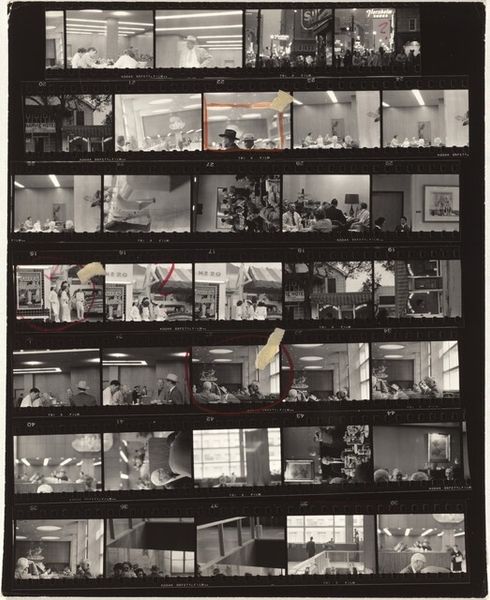
photography, gelatin-silver-print
#
landscape
#
function photography
#
archive photography
#
street-photography
#
photography
#
historical photography
#
gelatin-silver-print
#
monochrome photography
#
ashcan-school
#
cityscape
#
history-painting
#
realism
#
monochrome
Dimensions: sheet: 25.2 x 20.2 cm (9 15/16 x 7 15/16 in.)
Copyright: National Gallery of Art: CC0 1.0
Editor: Here we have Robert Frank’s gelatin silver print, "Church Parade—New York City no number," from 1957. The whole sheet of negatives… it's almost like a storyboard, revealing a narrative in each frame. What visual echoes do you find resonate the strongest? Curator: The layered symbols really draw me in. The American flags, of course, immediately signify patriotism and national identity, but then juxtapose those with the "St. Stanislaus BM Church" sign, highlighting a specific ethnic and religious community. Frank seems interested in the diverse allegiances at play in post-war America, right? Editor: Definitely! I can see the tension. It's like he’s saying being American is more complicated than just flags and parades. Curator: Precisely. What emotional quality does that high contrast and gritty aesthetic evoke? Does it lend itself to a specific meaning? Editor: It feels almost… uneasy. Like beneath the surface of celebration, there's something unsettling. Maybe the contrast hints at hidden disparities or frictions within that society? Curator: Yes, or even deeper conflicts within the self. Flags, like the church banner, act as metonyms or tropes. Both give visible form to emotional landscapes, yet neither may truly encompass the essence they’re intended to capture. That liminal space fascinates me. Editor: That’s interesting. So, these familiar icons… they become almost destabilized through his lens? Curator: In a way, yes. By showing them together, by revealing the context, Frank encourages us to question the uncritical acceptance of these symbols. A complex, multi-layered visual memory of an era. Editor: I see it now. Thank you! This changed how I think of these photographs. Curator: Indeed! I’m glad you understand the layers as the work itself is a kind of map, directing our journey of self-discovery.
Comments
No comments
Be the first to comment and join the conversation on the ultimate creative platform.
